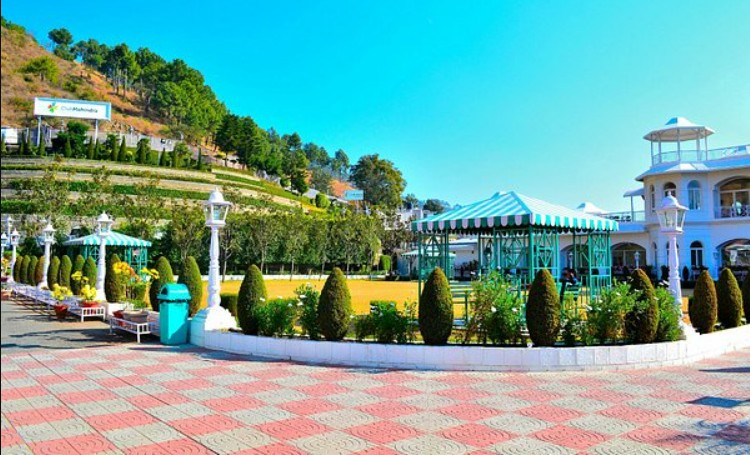“Discover Solan District in Himachal Pradesh, known for its lush greenery, scenic landscapes, rich history, and serene hills. A peaceful escape in nature’s lap.”

Explore Solan: Lush Greenery, History & Tranquil Vibes
Solan, a picturesque district in the northern Indian state of Himachal Pradesh, is a haven of natural beauty and cultural heritage. Named after the Hindu goddess Shoolini Devi, Solan is often referred to as the “Mushroom Capital of India” due to its significant mushroom cultivation. Encompassing an area of approximately 1,936 square kilometers, the district is situated between the charming towns of Shimla and Kalka.
The landscape of Solan is a treat for nature enthusiasts. The district boasts lush green valleys, rolling hills, and dense forests that are home to a diverse array of flora and fauna. The Solan Valley, with its cascading streams and verdant meadows, remains a favorite among trekkers and adventure seekers. The district’s elevation varies, providing a climate that ranges from temperate to subtropical, making it a pleasant getaway throughout the year.
Solan’s cultural heritage is deeply intertwined with its history. The Shoolini Mata Temple, perched atop a hill, is a revered religious site that holds an annual fair, attracting pilgrims and tourists alike. The district’s connection to education is strong, with the Solan town being home to the prestigious Dr. Yashwant Singh Parmar University of Horticulture and Forestry, contributing to research and education in agriculture and horticulture.
One of Solan’s most distinctive features is its role in the mushroom cultivation industry. The district’s cool climate and suitable topography have fostered the growth of this unique agricultural practice. Oyster, shiitake, and button mushrooms are cultivated here and distributed across the country. The Solan Mushroom Festival celebrates this agricultural achievement, offering a platform for farmers to showcase their produce and exchange knowledge.
Solan’s connectivity has improved over the years, enhancing accessibility for tourists. The Kalka-Shimla Railway, a UNESCO World Heritage Site, passes through the district, offering a scenic train journey that attracts thousands of tourists each year. The district is also well-connected by road, making it a convenient destination for those traveling from nearby cities.
With its mix of natural beauty, cultural richness, and agricultural significance, Solan stands as a remarkable district in Himachal Pradesh. Its serene ambiance, coupled with a touch of adventure and exploration, appeals to a wide range of travelers. As visitors meander through the winding roads, engage with the locals, and immerse themselves in the district’s offerings, Solan continues to etch itself as an unforgettable destination, captivating hearts and minds with every passing season.
Famous Places in Solan District
Certainly! The Solan District in Himachal Pradesh, India, is known for several famous places, including:
Kasauli: A popular hill station known for its colonial charm and serene ambiance.
Solan Town: The district’s headquarters and known for its educational institutions and temples.
Chail: Home to the highest cricket ground in the world and a beautiful palace.
Barog: Famous for its railway tunnel, lush greenery, and picturesque surroundings.
Jatoli Temple: An ancient temple dedicated to Goddess Durga.
Dagshai: A historic cantonment town with British-era architecture and schools.
Kuthar Fort: A historical fort known for its architecture and surrounding landscapes.
Mohan Shakti National Heritage Park: A park showcasing the rich cultural heritage of India.
Gurkha Fort: A fort with historical significance and panoramic views.
Metropolitan Park: A beautiful park offering recreational activities and natural beauty.
These are just a few of the notable places in Solan District. Each location offers its own unique charm and attractions.
Solan District, Himachal Pradesh
Sollan, known as the “Mushroom City of India,” is a picturesque district in Himachal Pradesh, nestled in the foothills of the Himalayas. It serves as a gateway to the higher reaches of the state and is famous for its pleasant climate, rich history, and vibrant culture. The district headquarters, Solan town, is a bustling hub with a mix of urban and rural landscapes.
Geography and Climate
Sollan is situated at an altitude of around 1,550 meters above sea level and enjoys a moderate climate throughout the year. Summers are mild, while winters can be chilly, with occasional snowfall in higher regions. The district is blessed with lush green valleys, dense forests, and scenic hills, making it a paradise for nature lovers and trekkers.
Historical and Cultural Significance
Sollan has historical importance, with roots dating back to ancient times. The district derives its name from Goddess Shoolini, the presiding deity of the region, and hosts the famous Shoolini Fair every year. The town was a British cantonment during the colonial era, and remnants of British architecture can still be seen.
Tourist Attractions
Sollan boasts numerous tourist spots, including:
- Mohan Shakti National Heritage Park – A spiritual and architectural marvel.
- Kasauli – A serene hill station with colonial charm.
- Jatoli Temple – One of the highest Shiva temples in Asia.
- Dagshai – A historical cantonment town with old-world charm.
Agriculture and Industry
Apart from mushrooms, Sollan is known for its tomato production, earning it the title of the “Tomato Capital of India.” It also has a strong industrial base, housing one of Himachal Pradesh’s largest pharmaceutical hubs.
With its unique blend of natural beauty, cultural heritage, and economic significance, Sollan remains a must-visit destination in Himachal Pradesh.
Read More :-